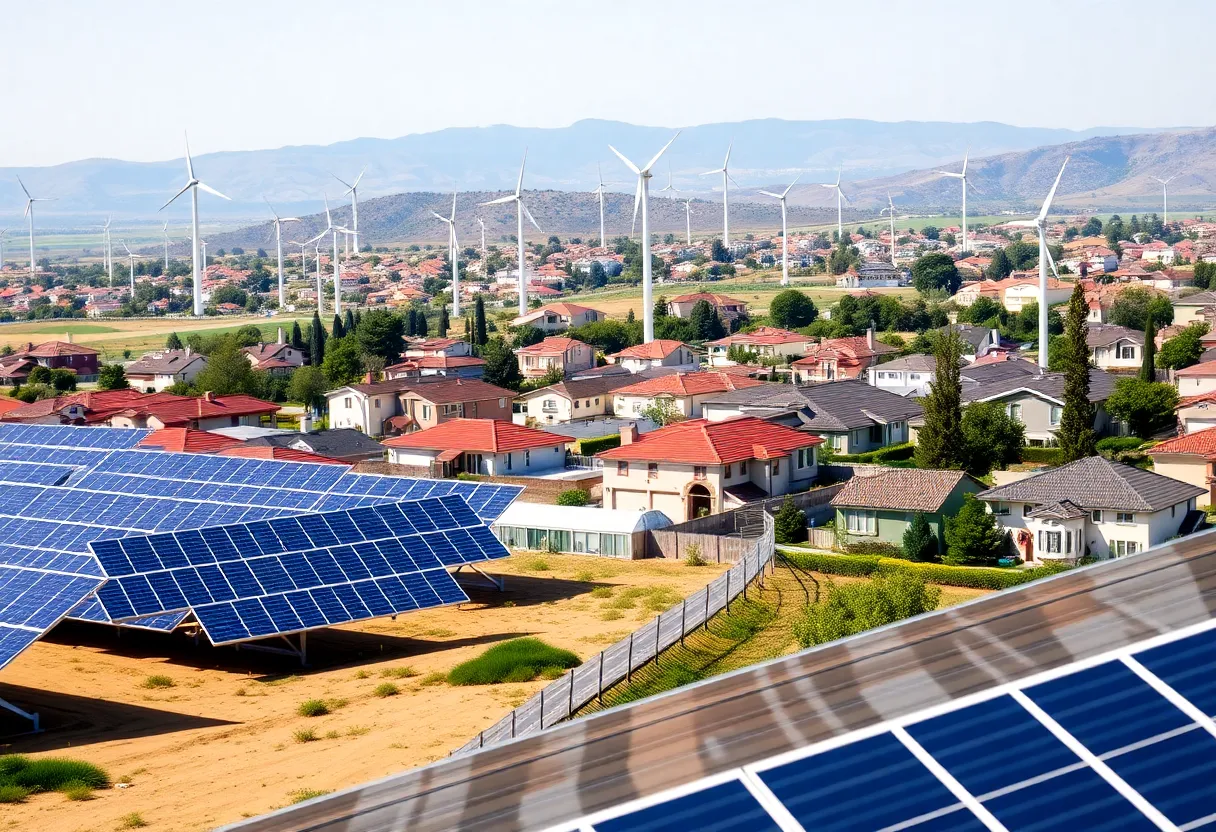California, September 27, 2025
News Summary
In October, over 11.5 million California households will receive automatic refunds on their electric bills through the California Climate Credit program. The total refunds expected to surpass $700 million will benefit residential customers and qualifying small businesses, providing an average credit of approximately $61 per household. This initiative is part of California’s wider efforts to combat climate change while supporting its residents financially. New legislation aims to increase future credits significantly, with investments of up to $60 billion allocated through 2045.
California households will receive significant financial relief this October as over 11.5 million residential customers are set to benefit from automatic refunds on their electric bills through the California Climate Credit program. The total payments in October are expected to exceed $700 million, providing much-needed support to households across the state.
Each eligible household will receive an average credit amount of approximately $61, with refunds ranging from $35 to $259. Most households are anticipated to receive between $56 and $81. This follows the credits issued in April 2025, bringing the average total refund for the year to $198 per customer. The refunds are part of California’s broader strategy to combat climate change and support its residents financially.
In addition to residential customers, qualifying small businesses will also benefit, receiving around $60 million in total through the Climate Credit program. The program is managed by the California Air Resources Board and is aimed at supporting a variety of climate initiatives.
New legislation, recently signed into law, is set to further increase these credits in the future. Up to $60 billion has been allocated to the electric Climate Credit through 2045, with the state projecting that refunds will increase beginning next year, although specific amounts have yet to be detailed.
The California Climate Credit program operates under the Cap-and-Invest Program, which has played a pivotal role in funding numerous initiatives related to climate action. This includes a remarkable allocation of $33 billion towards affordable housing near job centers, high-speed rail development, and zero-emission transportation projects in underserved communities. These initiatives have not only created over 120,000 jobs but have also led to significant reductions in carbon emissions, contributing to California’s greenhouse gas emissions dropping by 20% since 2000, all while the state’s GDP has grown by 78%. California has now established itself as the world’s fourth-largest economy.
In 2023, two-thirds of the electricity consumed in California was generated from clean energy sources, with the state experiencing days where its energy grid operated on 100% clean energy. The California Climate Credit program, established in 2014, has provided a cumulative total of $14.6 billion in refunds to residential utility customers, benefitting millions of families across the state.
The Climate Credit refunds occur biannually, in April and October, and are automatically credited to eligible customers’ bills. Residential customers of major utility providers, including PG&E, San Diego Gas & Electric, Southern California Gas Company, and Southwest Gas, qualify for these credits. Customers who do not see the credited amount on their bills are encouraged to contact their utility provider for assistance.
Key Features of the California Climate Credit Program
- Total refunds in October will exceed $700 million.
- Average refund amount per household will be approximately $61.
- Refund amounts range from $35 to $259.
- Qualifying small businesses will receive approximately $60 million.
- New legislation aims to increase future credits, with up to $60 billion allocated to the program through 2045.
- The program funded initiatives that created over 120,000 jobs and reduced millions of tons of carbon emissions.
FAQs
What is the California Climate Credit program?
The California Climate Credit program is designed to provide refunds to residential utility customers as a part of California’s efforts to combat climate change.
How much are households receiving in refunds?
The average credit amount per household will be approximately $61, with refunds ranging from $35 to $259.
When will the refunds be credited?
Refunds from the climate credit program occur twice a year, in April and October, and are automatically credited to eligible customers’ bills.
Who is eligible for these credits?
Residential customers of PG&E, San Diego Gas & Electric, Southern California Gas Company, and Southwest Gas are eligible for these credits.
Deeper Dive: News & Info About This Topic
- Fox40
- Wikipedia: California Climate Credit
- Los Angeles Times
- Google Search: California electricity refunds
- KSBY
- Encyclopedia Britannica: Electricity
- LAist
- Google News: California Climate Credit

Author: STAFF HERE HOLLYWOOD
The Hollywood Staff Writer represents the experienced team at HEREHollywood.com, your go-to source for actionable local news and information in Hollywood, Los Angeles County, and beyond. Specializing in "news you can use," we cover essential topics like product reviews for personal and business needs, local business directories, politics, real estate trends, neighborhood insights, and state news affecting the area—with deep expertise drawn from years of dedicated reporting and strong community input, including local press releases and business updates. We deliver top reporting on high-value events such as the Hollywood Bowl summer concerts, the Hollywood Christmas Parade, film premieres at TCL Chinese Theatre, and festivals at the Magic Castle. Our coverage extends to key organizations like the Hollywood Chamber of Commerce and Visit Hollywood, plus leading businesses in entertainment, dining, and tourism that define the local economy. As part of the broader HERE network, including HERELosAngeles.com, HEREBeverlyHills.com, HEREAnaheim.com, and HEREHuntingtonBeach.com, we provide comprehensive, credible insights into Southern California's dynamic landscape.





